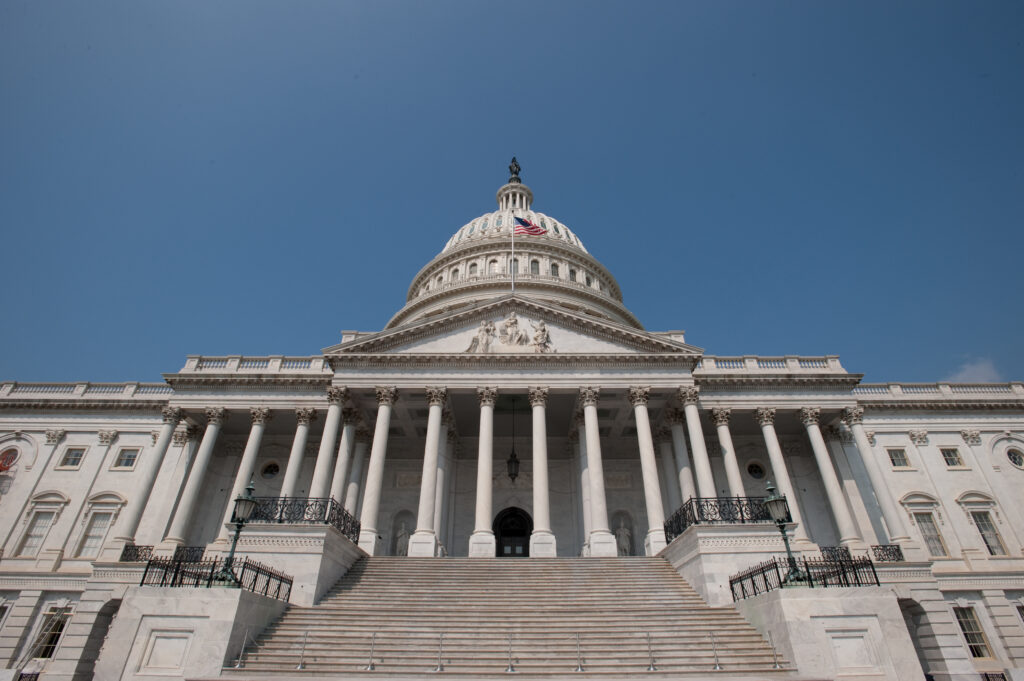
Budget delays persist in Washington, and lawmakers are now working on a third stopgap spending measure to prevent a partial government shutdown Friday. A new continuing resolution was unveiled Sunday that would keep part of the government operating at FY23 levels through March 1, with the rest of the government, including the Pentagon, kept afloat through March 8.
The legislation mirrors the unique two-tiered approach used for the previous CR enacted in November that funded four government appropriations bills through January 19 and the remaining eight appropriations bills (including defense) through February 2. At the time, House Speaker Mike Johnson (R-La.) said the two-phase timing would make it easier for lawmakers to finalize work on all 12 individual appropriations bills individually, rather than resorting to a cumbersome omnibus bill that would lump all federal spending into a single package.
The Senate passed the new CR Tuesday night in a 68-13 vote. The House must vote on the measure next, where Johnson faces pressure from the right wing of his caucus. The speaker will ultimately have to rely on support from Democrats to pass the new stopgap bill, as was the case with the CR in November.
Earlier this month, congressional leaders agreed to a topline spending amount for the federal budget in FY24, but a lot of work is still required to finalize the details of the individual spending bills. The topline agreement provides $886 billion for national defense, which includes the Pentagon, nuclear programs within the Department of Energy, and defense-related spending outside of the Department of Defense. That figure matches the debt ceiling agreement reached last year that established FY24 defense spending targets that were in line with the president’s FY24 request. The recent topline budget agreement also faced pressure from the far-right, which called for deeper federal spending reductions.
Johnson previously said he would avoid adopting another CR, and the prolonged use of stopgap spending measures raises fears of a year-long CR that would lock the DoD into last year’s spending levels for the remainder of the fiscal year. Pentagon leaders have warned Congress that a year-long CR would be detrimental to national defense. The multiple delays so far will also push back the release of the FY25 budget request. Typically released in early February, an FY25 request may not materialize until April or May.
Meanwhile, consideration of a $106 billion supplemental security request released by the administration in October remains in limbo. That request contained $61.4 billion for Ukraine, $14.3 billion for Israel, funding for Taiwan and the Indo-Pacific theater, as well as money for domestic border security. The supplemental has been bogged down by Republicans that have either put pressure on continued Ukraine aid or called for increased U.S. border security measures to be included in the legislation. Congressional leaders were invited to the White House this week to discuss a way forward for the supplemental request. The administration is particularly concerned about continued aid for Ukraine, as coffers used to provide weapons to Kyiv are running dry.
Shaun's deep-rooted interest in military equipment continues in his role as a senior defense analyst with a focus on the United States. He played an integral role in the development of Forecast International's U.S. Defense Budget Forecast, an interactive online product that tracks Pentagon acquisition programs throughout the congressional budget process. As editor of International Military Markets – North America, Shaun has cultivated a deep understanding of the vast defense markets in the United States and Canada. He is a regular contributor to Forecast International's Defense & Security Monitor blog and has co-authored white papers on global defense spending and various military programs.



